Dyfrbont Pontcysylle Aqueduct Thomas Telford (1757-1834) Ganwyd yn yr Alban ac wedi gweithio fel saer maen, cafodd Telford ei benodi fel Syrfewr Gweithiau Cyhoeddus Sir Amwythig yn 1787. Cafodd swydd Asiant Cyffredinol ar gyfer Camlas Ellesmere yn 1793 ac yr oedd yn gyfrifol am holl waith y gamlas. Yr oedd y ddwy Ddyfrbont, Y Waun (1801) a Phontcysyllte (1805), yn arloesol yn eu hadeiladwaith. Ym Mhontcysyllte adeilad- wyd un cafn haearn bwrw hir o naill ben y bont i'r llall i eistedd ar bileri cerrig 126 troedfedd (38.2m) uwchben Afon Dyfrdwy, a'r cafn yn cario'r dŵr a'r Ilwybr hallo. Yr oedd Telford yn gyfrifol am gannoedd o weithiau eraill ledled Prydain Fawr, yn cynnwys y ffordd newydd rhwng Amwythig a Chaergybi a honno'n mynd trwy bentref Froncysyllte ger pen arall y ddyfrbont. Gwahoddwyd ef i fod yn Llywydd cyntaf Sefydliad y Peirianwyr Sifil yn 1820 a daliodd yr anrhydedd honno hyd ei farwolaeth. Thomas Telford (1757-1834) Born in Scotland and having worked as a stonemason, Thomas Telford was appointed Surveyor of Public Works for Shropshire 1787. He was appointed General Agent for the Ellesmere Canal in 1793 and was responsible for all the work on the canal. The two aqueducts - Chirk (1801) and Pontcysyllte (1805) - were innovative in their construction. At Pontcysyllte a continuous cast iron trough was fabricated on top of stone pillars to carry the canal and towpath 126 feet (38.2m) above the River Dee. Telford was responsible for hundreds of other works throughout Great Britain, including the new road from Shrewsbury to Holyhead which passes through the village of Froncysyllte near the other end of the aqueduct. He was invited to become the first President of the Institution of Civil Engineers in 1820, an honour he held until his death. William Hazledine (1763-1840) Yr oedd Telford yn ei alw "Yr archgonsunwr ei hun, Myrddin Hazledine"! Ganwyd William Hazledine yn Sir Amwythig a datblygodd ei fusnes gwaith haearn yn yr Amwythig. Yn 1796 gwnaeth yr holl drawstiau a cholofnau ar gyfer Melin Bage- ffatri gyntaf y byd gyda fframwaith haearn. Sefydlodd ffowndri ym Mhlas Kynaston, llai na milltir o'r safle hwn, yn 1800 ac enillodd gytundeb y gwaith haearn ar gyfer y ddyfrbont ya Y oedd yn gyfrifol am wneud yr haeam i gyd e gludo i'r safle, ac yna am adeiladu's cafn 1007 troedfedd (305m) o hyd i gario'r gamlas dros Ddyffryn Dyfrdwy. Yr oedd Haziedine yn gyfrifol am gyflenwi haearn ar gyfer nifer o bontydd Telford ledled y wiad Yng Nghymru yr oedd hyn yn cynnwys pontydd crog y Fenai a Chonwy, a Phont "Waterloo" ym Metws y Coen William Hazledine (1763-1840) Telford called him "The Arch-conjurer himself, Merlin Hazledine"! William Hazledine was born in Shropshire and developed his iron- works business in Shrewsbury. In 1726 he supplied the iron beams and columns for Bage's Mill - the world's first iron framed factory. He established a foundry at Plas Kynaston, less than a mile from this site, in 1800 and won the ironwork contract for this aqueduct He was responsible for making all the iron, transporting it to site and building the 1007 ft (305m) long trough to carry the canal over the Dee Valley. Hazledine was responsible for supplying the ironwork for a number of Telford's bridges throughout the country. In Wales, these included the suspension bridges at Menai and Conwy and the "Waterloo Bridge at Betws y Coed. William Jessop (1745-1814) Ganwyd yn Nyfnaint, ac aeth William Jessop yn brentis at John Smeaton, "Tad Peirianeg Sifil. Yn 1772 dechreuodd weithio fel peiriannydd ymgynghol ar ei ben ei hun a daeth yn beirian nydd profiadol ac uchel ei barch ym maes camlesi, afonydd, draenio tir a gwaith tebyg. Yn 1791 cafodd ei benodi fel Peiriannydd Ymgynghorol ar gyfer camlas Ellesmere, a fwriadwyd i gysylltu afonydd Merswy, Dyfrdwy a Hafren. Jessop a benderfynodd lwybry gamlas a llywio'r ddeddf berthnasol drwy'r broses Semedoor Wea Telford gael ei benodi fel Asiant Cyffredinol ro Jessopped yeste cywiro a chymeradwyo cynlluniau ac argymhellion Telfowa redd ddau yn cydweithio ar brosiect sylweddol hefyd yn yr Alban a 1805 hyd at farwolaeth Jessop. Mae Camlas Caledonia, yn medeg o for Iwerddon ger Fort William hyd at För y Gogledd yn Invermess William Jessop (1745-1814) Born in Devon, William Jessop was apprenticed to John Smeaton, "the Father of Civil Engineering. In 1772 he started working as a Consulting engineer in his own right and became a most experienced and respected engineer in the field of canals, rivers, drainage and similar works. In 1791 he was appointed consulting engineer for the Ellesmere canal, which was intended to join the rivers Mersey, Dee and Severn with each other. Jessop decided the route of the canal and steered the relevant Act through the Parlia- mentary process. After Telford was appointed as General Agent Jessop's role was to consider, correct and approve Telford's plans and recommendations. The two also worked together on a significant project in Scotland from 1803 until Jessop's death. The Caledonian Canal runs from the Irish Sea near Fort William to the North Sea at Inverness.
Pontcysyllte Aqueduct & Trevor Basin Visitor Centre, Pontcysyllte
Google Streetview
OpenStreetMap






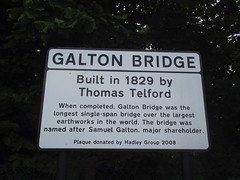
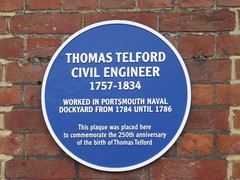

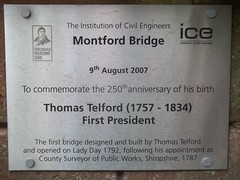

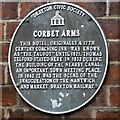
.jpg?width=250)

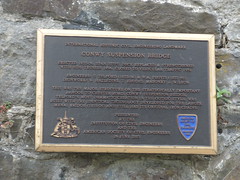
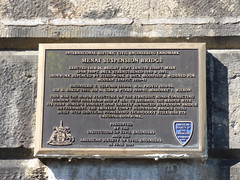



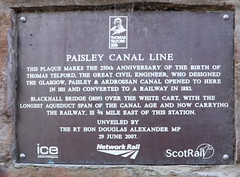
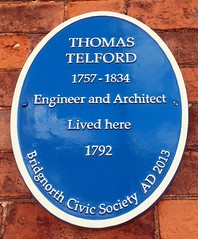
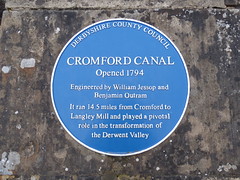
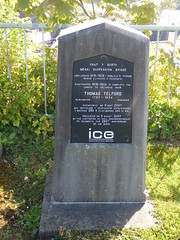
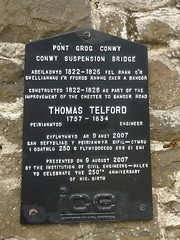
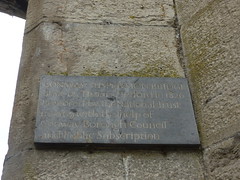




_ENGINEER_Lived_here_(2).jpg?width=250)